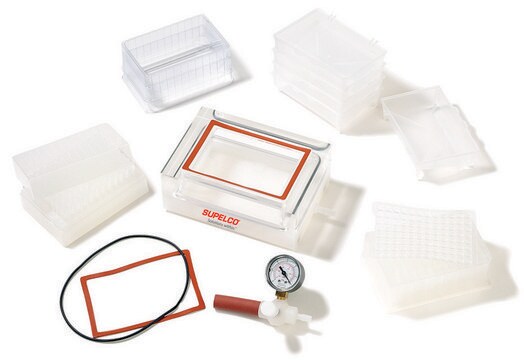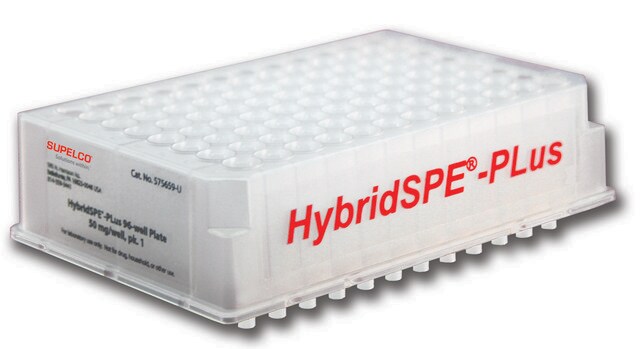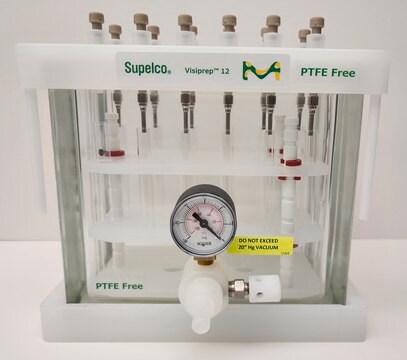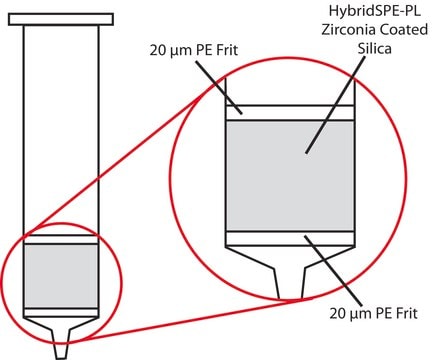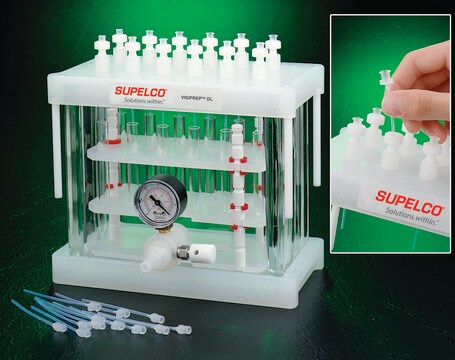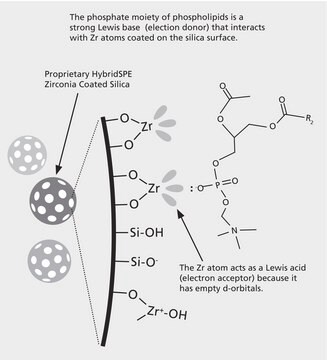575659-U
HybridSPE®-PLus 96-Well solid phase extraction (SPE) Plate
Volume 2 mL, bed wt., 50 mg, pk of 1 ea
Synonyme(s) :
HybridSPE®-PLus
About This Item
Produits recommandés
product name
HybridSPE®-PLus 96-Well Plate, volume 2 mL, pk of 1 ea
Description
96-well Plate
Niveau de qualité
Gamme de produits
HybridSPE®
Composition
bed wt., 50 mg
Conditionnement
pk of 1 ea
Technique(s)
solid phase extraction (SPE): suitable
Volume
2 mL
Groupe de la matrice active
zirconia-based phase
Vous recherchez des produits similaires ? Visite Guide de comparaison des produits
Description générale
Our HybridSPE-PLus products offer the same time-proven chemistry of our traditional HybridSPE-Phospholipid products coupled with manufacturing enhancements that stem from years of production experience. These manufacturing enhancements have allowed us to increase flow consistency and reduce sample hold up volumes, further improving analyte recoveries and assay reproducibility. We invite customers to take advantage of the newest technology; HybridSPE-PLus.
Caractéristiques et avantages
- Simple 2-3 step standard methodology analogous to traditional protein precipitation provides simultaneous removal of both proteins and phospholipids
- Unique Lewis acid/base retention mechanism effectively removes phospholipids from both hydrophilic and hydrophobic analytes of interest (unlike competitive chemistries) eliminating phospholipid-induced ion suppression
- Highly reproducible, consistent product performance
- Provides cleaner samples for longer column life and less instrument downtime
- Available in 96-well and 1 mL cartridge dimensions
Informations légales
Code de la classe de stockage
11 - Combustible Solids
Classe de danger pour l'eau (WGK)
WGK 3
Point d'éclair (°F)
Not applicable
Point d'éclair (°C)
Not applicable
Faites votre choix parmi les versions les plus récentes :
Déjà en possession de ce produit ?
Retrouvez la documentation relative aux produits que vous avez récemment achetés dans la Bibliothèque de documents.
Les clients ont également consulté
Articles
This article highlights the impact that sample matrix effects can have on LC/MS response and discusses two novel approaches to reduce it.
Using HybridSPE-Phospholipid, Ascentis Express, and Other LC-MS Workflow Components
Protocoles
Immunoassay-based methods for digitoxin or digoxin exist, but are time consuming, labor intensive, and not selective due to similarities in their chemical structures.
LC/MS/MS Analysis of Interacting Cardiac Drugs Digoxin, Quinidine, Amiodarone and Verapamil on Titan™ C18
Contenu apparenté
Small molecules are ions and compounds of molecular weight typically less than 900 daltons. These compounds can be effectively separated and analyzed by HPLC, UHPLC and LC-MS using mainly silica particles or monolithic stationary phases with a broad range of column chemistries (modifications).
Les petites molécules sont des ions ou des composés d'une masse moléculaire généralement inférieure à 900 daltons. Ces molécules peuvent être séparées efficacement et analysées par HPLC, UHPLC et LC-MS en utilisant essentiellement des particules de silice ou des phases stationnaires monolithiques présentant un large éventail de chimies de colonnes (modifications) différentes.
Solid phase extraction purifies samples for chromatographic analysis, improving data quality and protecting analytical columns.
Chromatograms
application for HPLC, application for SPENotre équipe de scientifiques dispose d'une expérience dans tous les secteurs de la recherche, notamment en sciences de la vie, science des matériaux, synthèse chimique, chromatographie, analyse et dans de nombreux autres domaines..
Contacter notre Service technique